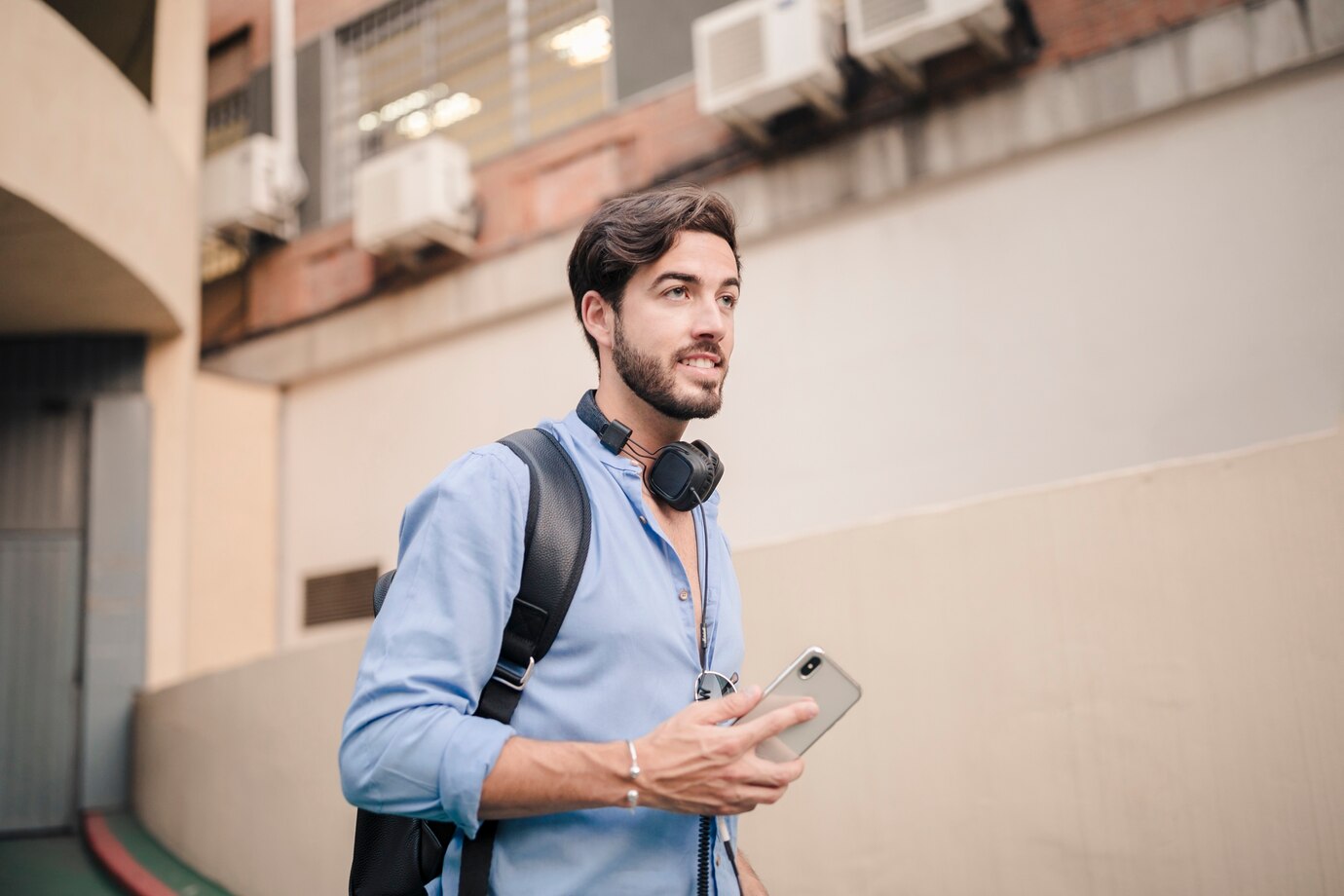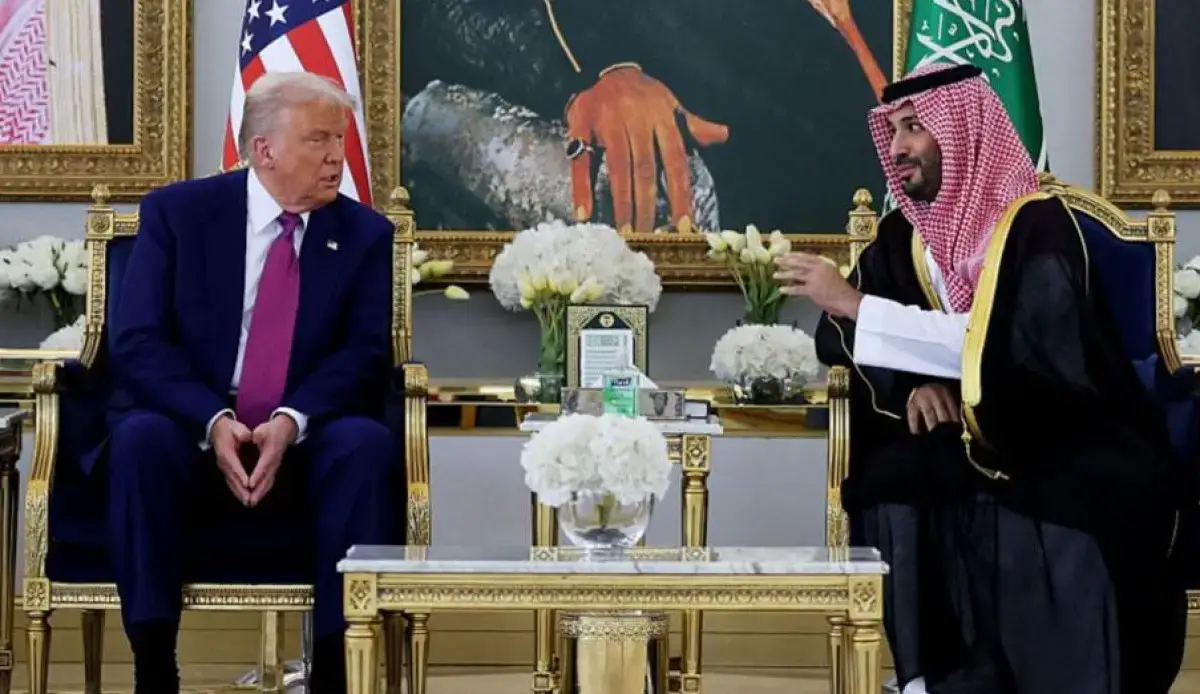President Trump Launches Second-Term Foreign Tour with High-Stakes Diplomacy and a Viral Coffee Moment in Saudi Arabia
President Donald Trump commenced his first significant overseas tour of his second administration on Tuesday, arriving in Riyadh, Saudi Arabia, to inaugurate a three-nation Middle East itinerary. In addition to Saudi Arabia, the president will travel to Qatar and the United Arab Emirates (UAE). Throughout his journey, Trump aims to advance U.S. strategic and economic interests, deepen bilateral relationships, and reinforce America’s role in promoting regional stability. Yet a seemingly innocuous moment during his welcome reception—his tentative handling of a traditional Saudi coffee offering—quickly went viral, igniting debate and underscoring how even minor protocol details can shape global perceptions.
I. A Grand Welcome in Saudi Arabia
A. Crown Prince’s Fist Pump and Purple Carpet
Upon his arrival at King Khalid International Airport, President Trump was greeted personally by Crown Prince Mohammed bin Salman. In a display that blended official protocol with personal rapport, the Crown Prince approached Trump’s aircraft with a decisive fist pump before escorting him down a purple carpet toward a waiting motorcade. This gesture symbolized both the warmth of bilateral ties and the theatrical pageantry frequently associated with high-level state visits.
B. The Traditional Coffee Ceremony
Shortly thereafter, Trump and the Crown Prince participated in a centuries-old Saudi coffee ceremony. The ritual—rooted in Bedouin hospitality—entails serving lightly roasted coffee in small finjan cups, accompanied by dates. It represents respect, friendship, and the host’s generosity. Trump’s engagement in the ceremony was broadly welcomed as a diplomatic courtesy, yet it was one fleeting gesture—the president’s delayed sip of coffee—that captured the world’s attention.
Trump Enjoys Traditional Saudi Coffee During Royal Palace Reception in Riyadh.
#TrumpInKSA pic.twitter.com/gsB0TulfNM— TSP English (@thesaudipost_e) May 13, 2025
II. The Viral Coffee Moment
A. Online Speculation and Health Concerns
Video clips from multiple angles circulated rapidly on social media, showing Trump receiving the coffee, conversing with the Crown Prince, and then placing the cup on a nearby table. Users speculated wildly: Had the president declined the beverage as a precaution against poisoning? Was it due to a preference for avoiding caffeine? Or did he simply forget to take a drink amid ongoing conversation? Theories ranged from the strategic (concerns about food safety) to the personal (Trump’s known disinterest in hot beverages).
B. Clarifications and Context
Within hours, additional footage emerged confirming that Trump had indeed taken a sip later in the ceremony. While the initial clip fueled sensational headlines, the fuller context demonstrated that he participated fully in the ritual. Nonetheless, the brief hesitation served as a reminder that even minor protocol deviations can spark intense scrutiny—and that social media can amplify isolated moments into global talking points.
III. Displays of Military Solidarity
A. F-15 Escort Flyover
To underscore the strategic partnership between the United States and Saudi Arabia, six Saudi F-15 fighter jets escorted Air Force One as it approached Riyadh’s airspace. This rare aerial formation symbolized a mutual commitment to defense cooperation and sent a clear message of deterrence in a region marked by volatile security challenges.
B. High-Level Cabinet Delegation
President Trump was accompanied by key Cabinet members and advisers, including Secretary of State Marco Rubio, Defense Secretary Pete Hegseth, and Energy Secretary Chris Wright. Their presence highlighted the trip’s multifaceted agenda: from political consultations and defense cooperation to discussions of energy markets and investment opportunities.
IV. Strategic Objectives in Saudi Arabia
A. Reinforcing Bilateral Security Cooperation
Central to Trump’s discussions with Crown Prince Mohammed bin Salman will be the enhancement of joint efforts against extremist threats. Both countries share intelligence on groups such as ISIS and Al Qaeda affiliates, and they seek deeper coordination on counterterrorism operations, border security, and vigilance against ballistic missile proliferation.
B. Advancing Economic Partnerships
Economic collaboration remains at the forefront of the Saudi agenda—particularly under Crown Prince Mohammed’s Vision 2030 program, which aims to diversify the kingdom’s economy beyond oil. Trump’s delegation includes representatives from major U.S. technology and defense firms, reflecting interest in infrastructure projects, technology transfer, and energy innovation.
V. Itinerary Highlights: Qatar and the UAE
A. Qatar: Military Presence and Regional Stability
Following Saudi Arabia, Trump will travel to Doha, home to Al Udeid Air Base, where some 10,000 U.S. service members are stationed. He is slated to meet with Emir Sheikh Tamim bin Hamad Al Thani and address troops, reaffirming America’s strategic footprint on the Arabian Peninsula. Dialogue will encompass the Gulf Cooperation Council’s unity, mediation in regional conflicts (notably Yemen), and ongoing negotiations surrounding the U.S. base’s future.
B. The United Arab Emirates: Innovation and Investment
Trump’s final stop in Abu Dhabi will showcase the UAE’s rapid modernization and its role as a financial hub. He is expected to engage with Crown Prince Mohammed bin Zayed Al Nahyan on issues ranging from aerospace cooperation to renewable energy ventures. A roundtable with prominent figures—potentially including Elon Musk, Mark Zuckerberg, and Sam Altman—will explore avenues for U.S. tech investment in the Gulf and reciprocal opportunities for Gulf capital in Silicon Valley.
VI. The Significance of the Middle East in Trump’s Foreign Policy
A. The “Golden Age” Vision
White House Press Secretary Karoline Leavitt has characterized this trip as ushering in a “golden age” of U.S.-Middle East cooperation—a period defined by mutual respect, economic opportunity, and enhanced security. Trump’s messaging emphasizes partnership rather than paternalism, aiming to shift narratives away from conflict toward commerce and collaboration.
B. Countering Extremism through Diplomacy
As extremist ideologies continue to threaten regional stability, Trump’s engagements underscore the necessity of a unified front among Gulf states, Israel, Egypt, and the United States. His second-term agenda places a premium on facilitating diplomatic back channels, mediating longstanding disputes, and sponsoring educational and cultural exchanges to undercut radicalization at its roots.
VII. Broader Implications and Next Steps
A. Geopolitical Significance
Trump’s first overseas trip of his second term transcends ceremonial protocol; it signals Washington’s prioritization of Middle East alliances at a time when China and Russia seek to expand their influence. The U.S. commitment to Gulf security and energy markets remains a cornerstone of global stability.
B. Economic and Cultural Exchange
The president’s emphasis on technology partnerships and trade missions highlights a shift toward non-oil sectors—digital infrastructure, fintech, renewable energy, and entertainment. Such initiatives aim to build sustainable growth models and foster people-to-people connections that endure beyond political tenures.
C. Continuity and Change
While Trump’s first-term Middle East engagements laid groundwork—particularly the Abraham Accords and defense agreements—this second-term tour seeks to deepen those achievements and explore new frontiers. By combining high-profile diplomacy with economic outreach and symbolic gestures (even a viral coffee sip), the administration endeavors to rejuvenate America’s role as both a security guarantor and a commercial partner.
Conclusion
President Trump’s Middle East tour—beginning with a meticulously orchestrated state welcome in Saudi Arabia, punctuated by a moment of viral intrigue over a cup of traditional coffee, and set against grand military escorts—represents a comprehensive diplomatic initiative. Over the coming days in Qatar and the UAE, the president will seek to leverage strategic alliances, cultivate economic ties, and project U.S. leadership at a critical juncture in regional geopolitics. As the world watches each handshake, flight formation, and cabinet-level meeting, the success of this journey will be measured not only by media impressions but by tangible agreements, strengthened partnerships, and a shared vision for stability and prosperity in the Middle East.

Adrian Hawthorne is a celebrated author and dedicated archivist who finds inspiration in the hidden stories of the past. Educated at Oxford, he now works at the National Archives, where preserving history fuels his evocative writing. Balancing archival precision with creative storytelling, Adrian founded the Hawthorne Institute of Literary Arts to mentor emerging writers and honor the timeless art of narrative.
